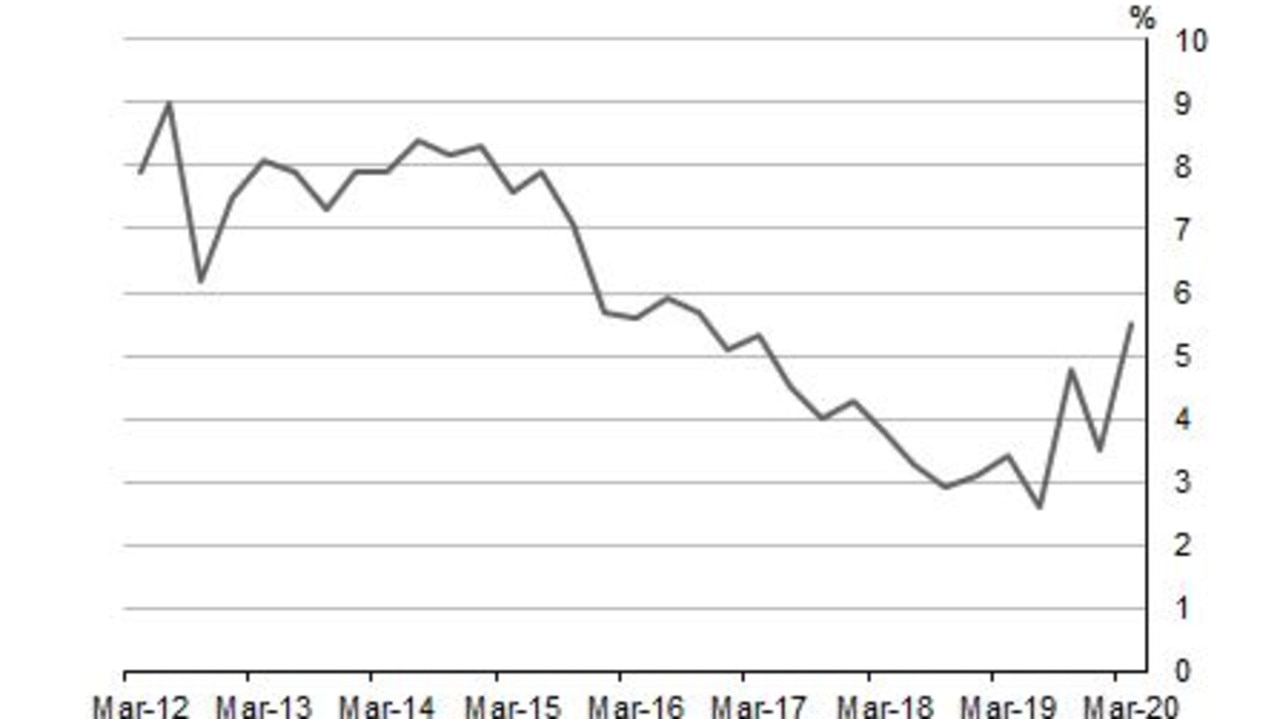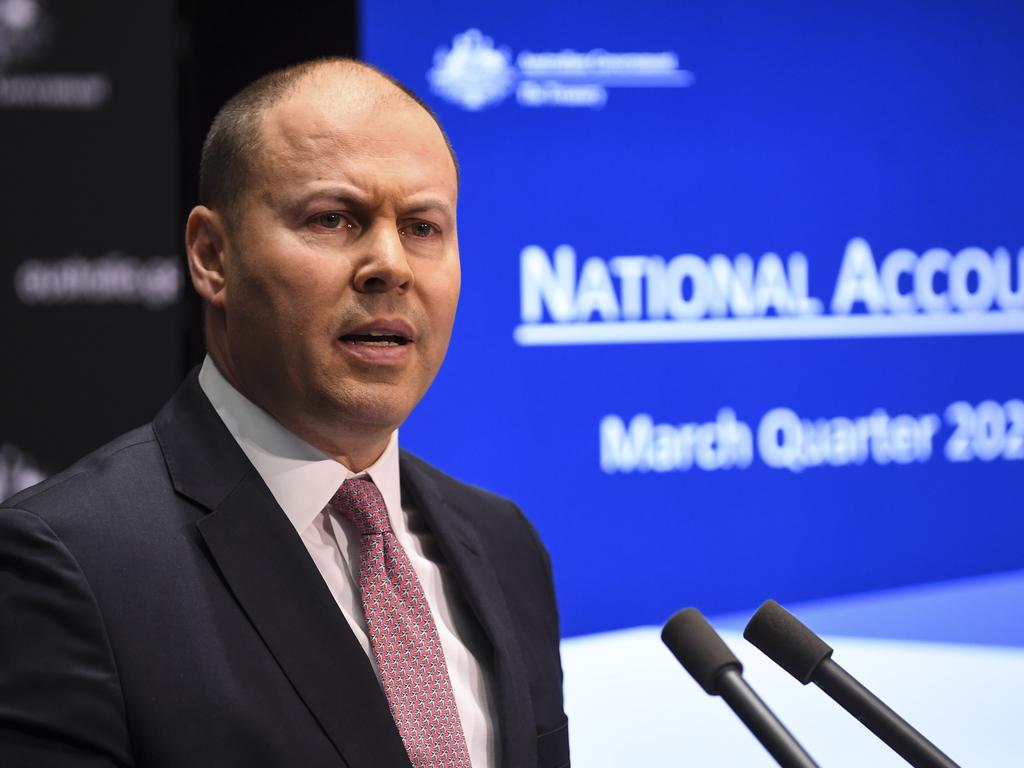Australia recession: Graph that rings economists’ alarm bells
Australia is officially in recession not seen since the 1990s, and there’s one graph that should have economists’ alarm bells ringing.
It’s official: Australia is in a recession for the first time in 29 years.
And there’s one graph in today’s national accounts that tells the story of why the great toilet paper panic buying spree of 2020 didn’t save the nation’s economy from going backwards.
It shows that Australians are earning less and saving more, a combination that rings economists’ alarm bells.
Treasurer Josh Frydenberg brushed it away in today’s press conference.
“People are feeling uncertain. And when people feel uncertain about the economic climate, they save more. I think that’s the end of it,’’ he said.
But for economists, that’s one of the telling signs that an economy is in big trouble.
“People are earning less but saving more and traditionally that’s a very dangerous sign,’’ Indeed’s chief economist Callam Pickering said.
RELATED: Plan to let Aussies raid super to buy homes
RELATED: Who will get homebuyers handout

“It’s often the cause of recessions. A recession, at its core, is a situation where people are spending less than they used to. One of the biggest challenges in the economy is encouraging people to spend.”
The nation’s household saving rate inched higher to 5.5 per cent in the March quarter, the highest since the September quarter 2016.
“With concerns over job security and the economic outlook, along with shutdowns that made spending more difficult, it is only natural that households are cautious and reluctant to spend,’’ Mr Pickering said.
“One of the big challenges as the economy emerges from lockdown will be encouraging households and businesses to spend as they did pre-crisis. High savings and lower incomes has always been a troubling combination.”
While some economists believed that the panic buying in the March quarter might save the economy from recording two consecutive quarters of negative economic growth — the technical definition of a recession — it wasn’t enough.
“Overall that sort of panic buying is very visible but it’s only a small portion of spending. They really narrowed down spending to absolute essentials,’’ Mr Pickering said.
Propping up the nation’s household spending was a range of stimulus payments rolled out including $750 COVID-19 supplements paid to welfare recipients.
As the Morrison Government reviews the $1500 a fortnight JobKeeper allowance that will run until September 27, the Treasurer also flagged potential changes to the size of the subsidy.
“We want to understand whether the quantum — that $1,500 payment — continues to be the right amount,’’ he said.
“Also bearing in mind that some people are getting paid more than they would otherwise get by virtue of having a flat payment.”
Rebuilding confidence in the economy is vital, which is one of the reasons why the Treasurer highlighted the resilience of the Australian economy.
As the Treasurer pointed out, Australia’s performance in the March quarter compares to even more dire negative growth overseas including 9.8 per cent in China, 5.3 per cent in France,
2.2 per cent in Germany, 2 per cent in the United Kingdom, and 1.3 per cent in the United States.
“With 40 million jobless claims in America over the last 10 weeks, the economic situation in that country, and across the globe, is quite severe indeed,’’ Mr Frydenberg said.
“In Australia’s remarkable story of almost 29 consecutive years of economic growth, this is only the fourth negative quarter in that time.
“Less than 100 days ago, our nation was on the edge of an economic cliff. Treasury were contemplating a fall in GDP of more than 20 per cent in the June quarter. This was the economists’ version of Armageddon.”
While fear of a lockdown saw panic-buying of food and household items, total consumption still fell by 1.1 per cent in the quarter – the largest quarterly decline in consumption in 34 years.

“People buying food, pharmaceutical goods, goods for their home computer at home as they were preparing for lockdown – saw a rise in consumption for goods,’’ he said. “But 2.4 per cent fall in services reflects that people weren’t going out to cafes or restaurants, weren’t booking in hotels, and weren’t taking transport. This is the story of what was happening in the economy as we saw panic buying in our supermarkets, but we saw people increasingly staying at home.”
One of the big items we spent more money on was booze, which rose by more than 3 per cent.
Strictly speaking, the Treasurer could have waited until the June quarter figures were released to confirm two quarters of negative growth and a recession but he chose not to pretend when asked” “Is Australia in recession today?”.
“Well, the answer to that is yes,’’ he said.




